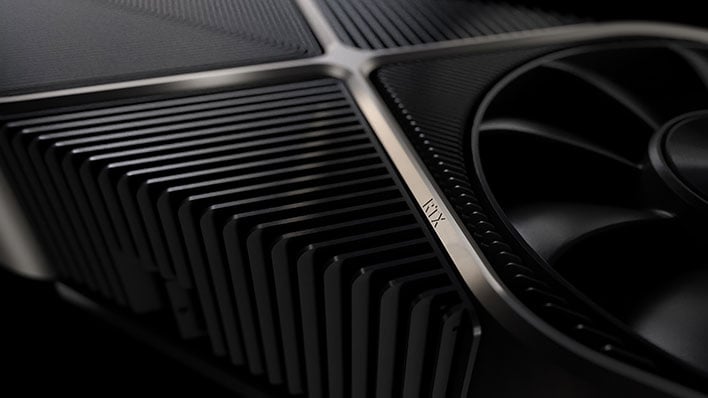NVIDIA's Ada Lovelace GPU Allegedly Brings A 2X Uplift Over Ampere At Twice The Power

Forget for a moment that graphics cards are scarcer than unobtanium. We all know the situation by now, and it's still going to be a bit before things change. That said, new products will continue to manifest. For NVIDIA, that means an eventual GeForce RTX 40 series (if sticking with the the present naming convention), and rumor has it those next-gen parts will deliver a huge performance uplift, albeit at a cost.
The codename that keeps popping up as the successor to Ampere is Ada Lovelace. NVIDIA has not formally introduced anything at this still-early stage, but if past rumors pan out, it will be built on a 5-nanometer manufacturing process, with a flagship consumer offering—GeForce RTX 4090, presumably—cranking the clock to 2.2GHz.
It's also said the top Ada Lovelace card will pair an unspecified amount of GDDR6X memory with a 384-bit memory bus, which is the same configuration as the current flagship card, the GeForce RTX 3090. But while there may not be a leap to significantly faster memory or a fatter memory bus, the GPU architecture could bring some big gains.
The latest unofficial update comes from leaker @greymon55, who claims NVIDIA's next-gen GPU will offer "double performance" and "double power consumption" compared to Ampere. They also pose the question, "Can you take it?"
A valid question for sure, especially when the general expectation from transitioning to a smaller node is better power efficiency. However, graphics cards continue to pull more power from the outlet (and your power supply), and rumor also has it that next-gen GPUs that tap into the PCI Express 5.0 bus will adopt a new power connector capable of delivering 600W.
It's not necessarily a matter of being wasteful with resources, though. Yet another rumor suggests NVIDIA's next-gen AD102 GPU will manifest with up to 18,423 CUDA cores in the GeForce RTX 4090. That's a nearly 76 percent increase in the number of CUDA cores. Combined with whatever architectural gains Ada Lovelace delivers over Ampere, it's easy to make the speculative leap that it could indeed be twice as powerful, while consuming quite a bit more power. We'll see.


